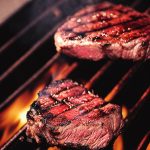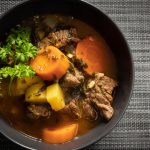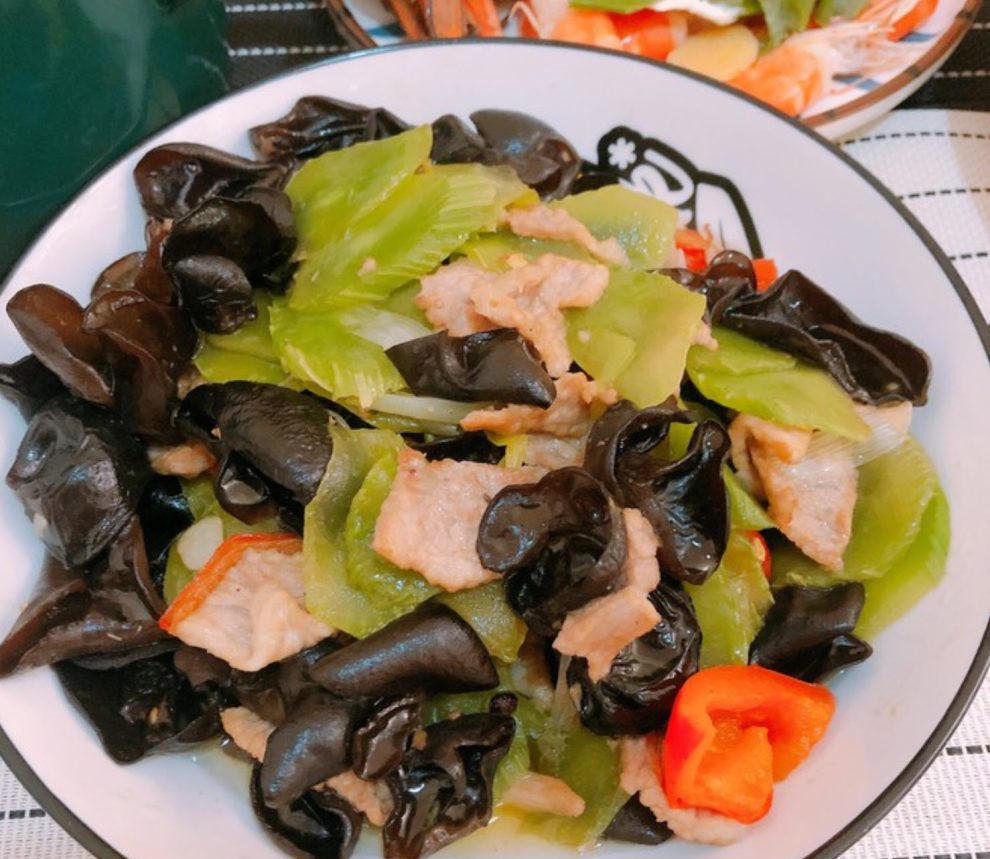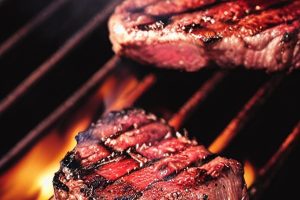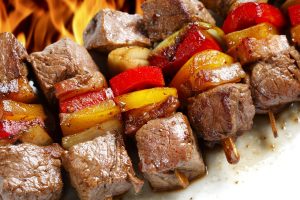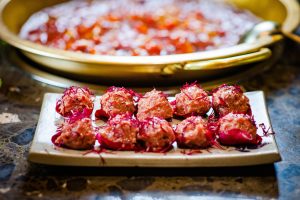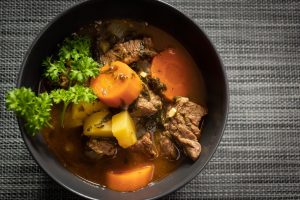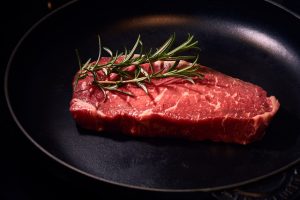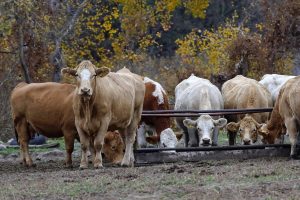Unraveling the Mystery: Exploring the Ancient Origins of Moo Shu Beef in China
Moo Shu Beef, a popular Chinese dish enjoyed by many around the world, has a long and intriguing history. This delectable stir-fry dish, known for its tender beef, crisp vegetables, and flavorful sauce, has its roots deeply embedded in ancient Chinese cuisine. Exploring the origins of Moo Shu Beef unveils a fascinating journey through time and reveals the rich culinary traditions of China.
The history of Moo Shu Beef can be traced back to the Han Dynasty (206 BCE – 220 CE), which marked a significant period in Chinese history. During this time, the Silk Road connected China to the outside world, facilitating the exchange of goods, ideas, and culinary practices. It was during this era that the concept of stir-frying, a technique that plays a central role in Moo Shu Beef preparation, gained popularity.
Stir-frying, characterized by its swift cooking process over high heat, was a practical method for the ancient Chinese, allowing them to prepare meals quickly and efficiently. This cooking technique perfectly suited the nomadic lifestyle of the northern region of China, where the dish is believed to have originated. The fast-paced nature of stir-frying allowed the nomads to cook their meals swiftly while on the move.
The name “Moo Shu” itself holds a clue to the dish’s ancient origins. The term “Moo Shu” is derived from the Mandarin word “mó xū,” which translates to “wood shavings” or “wood chips.” This name refers to the traditional method of cooking Moo Shu Beef, where thin slices of beef are stir-fried with vegetables on a hot wok, resembling wood shavings.
The key ingredients of Moo Shu Beef have also evolved over time. Originally, the dish consisted of thinly sliced beef, wood ear mushrooms, and various vegetables such as cabbage and carrots. These ingredients were readily available in the northern regions of China and contributed to the dish’s hearty and nutritious nature. Over the centuries, the recipe has evolved to include additional ingredients such as bamboo shoots, bean sprouts, and scallions, further enhancing its flavors and textures.
While the origins of Moo Shu Beef lie in the northern regions of China, the dish eventually spread throughout the country and gained popularity in different regions. As it traveled from one region to another, local variations emerged, resulting in a diverse range of Moo Shu Beef recipes that can be found across China today.
In conclusion, the ancient origins of Moo Shu Beef in China reveal a rich culinary heritage that has stood the test of time. The dish’s history can be traced back to the Han Dynasty, where the stir-frying technique and practicality of the dish were embraced by the nomadic lifestyle of the northern regions. Today, Moo Shu Beef continues to be enjoyed globally, a testament to its enduring appeal and the cultural significance it holds in Chinese cuisine.
From Imperial Courts to Modern Kitchens: Tracing the Evolution of Moo Shu Beef in Chinese Cuisine
Moo Shu Beef is a popular dish in Chinese cuisine that has evolved over centuries, reflecting the changing tastes and cooking techniques of different dynasties. From its origins in the imperial courts to its transformation in modern kitchens, this dish has undergone a fascinating evolution.
The earliest records of Moo Shu Beef can be traced back to the Ming dynasty (1368-1644), where it was known as “mu-xu,” meaning “wooden pan.” During this time, it was primarily served in the imperial courts and was considered a delicacy reserved for the upper classes. The dish consisted of thinly sliced beef stir-fried with various vegetables, such as cabbage, mushrooms, and bamboo shoots. It was seasoned with soy sauce, ginger, and garlic, giving it a rich and savory flavor.
As the Qing dynasty (1644-1912) came into power, Moo Shu Beef started to gain popularity among the general population. This was due to the increased availability of ingredients and improvements in cooking techniques. During this period, the dish began to incorporate additional ingredients, such as scrambled eggs and bean sprouts, to enhance its texture and taste.
However, it was not until the early 20th century that Moo Shu Beef underwent its most significant transformation. With the introduction of Western influences and the rise of the modern kitchen, the dish took on a new form. This was largely influenced by the Chinese diaspora, particularly in the United States, where Chinese immigrants adapted their traditional recipes to suit local tastes.
In modern kitchens, Moo Shu Beef typically consists of thinly sliced beef cooked with a combination of vegetables, including cabbage, carrots, and bell peppers. The ingredients are stir-fried in a wok, seasoned with a mixture of soy sauce, hoisin sauce, and oyster sauce, and served with steamed pancakes. These pancakes are made from a flour-based batter and are used to wrap the beef and vegetable mixture, creating a flavorful and satisfying meal.
While the core ingredients and cooking techniques have remained relatively consistent throughout Moo Shu Beef’s evolution, the dish has continued to adapt to changing tastes and dietary preferences. Today, it is common to find variations that cater to vegetarian or vegan diets, substituting the beef with tofu or mushrooms.
In conclusion, Moo Shu Beef has come a long way from its origins in the imperial courts of ancient China. Its evolution reflects the changing culinary landscape and the influence of different dynasties and cultural influences. Whether enjoyed in a traditional setting or a modern kitchen, Moo Shu Beef continues to be a beloved dish that showcases the rich and diverse flavors of Chinese cuisine.
A Taste of Tradition: The Historical Significance of Moo Shu Beef in Chinese Culinary Heritage
Moo Shu Beef holds a prominent place in Chinese culinary heritage, representing a taste of tradition that has been passed down through generations. This renowned dish carries historical significance, reflecting the rich cultural tapestry of China. From its origins in ancient China to its continued popularity worldwide, Moo Shu Beef embodies the essence of Chinese cuisine.
The origins of Moo Shu Beef can be traced back to the northern regions of China, where it was first created during the Han Dynasty (206 BC – 220 AD). Its creation was influenced by the nomadic Mongolian tribes, who had a significant impact on the culinary traditions of the region. The dish was initially prepared with thin pancakes made from wheat flour, which were filled with stir-fried beef, vegetables, and a variety of seasonings.
During the Tang Dynasty (618-907 AD), the popularity of Moo Shu Beef spread beyond the northern regions and found its way into the imperial courts. It became a favorite dish among the nobility and was often served during grand banquets and ceremonies. The dish’s versatility and rich flavors made it a symbol of luxury and indulgence.
As centuries passed, Moo Shu Beef continued to evolve, adapting to the changing tastes and preferences of different dynasties. The addition of various ingredients, such as mushrooms, bamboo shoots, and bean sprouts, further enhanced its flavors. The dish’s preparation also became more refined, with chefs perfecting the art of stir-frying, ensuring that the beef remained tender and flavorful.
The cultural significance of Moo Shu Beef extends beyond its historical roots. It represents the harmony between different culinary techniques and ingredients, reflecting the diverse nature of Chinese cuisine. The combination of savory beef, crisp vegetables, and fragrant seasonings creates a symphony of flavors that epitomizes the essence of Chinese cooking.
Today, Moo Shu Beef has gained international recognition and is enjoyed by people all over the world. Its inclusion in Chinese restaurants worldwide has made it a staple of Chinese cuisine. However, it is essential to note that the authenticity and preparation methods may vary across different regions and establishments.
In conclusion, Moo Shu Beef holds a special place in Chinese culinary heritage due to its historical significance and cultural impact. From its humble beginnings during the Han Dynasty to its present-day popularity, this dish embodies the essence of Chinese cuisine. Its rich flavors and unique combination of ingredients reflect the diverse nature of Chinese culinary traditions, making it a truly remarkable and iconic dish.
Regionality and Authenticity: Discovering the Regional Variations of Moo Shu Beef Across China
Moo Shu Beef is a popular dish in Chinese cuisine that has gained international recognition for its flavorful combination of tender beef, fresh vegetables, and savory sauce. However, what many people may not realize is that the dish varies significantly across different regions of China, each offering their own unique twist on this classic recipe. Exploring the regional variations of Moo Shu Beef not only provides a culinary adventure but also offers a deeper understanding of the diverse flavors and cooking styles found throughout China.
In the northern regions of China, such as Beijing and Tianjin, Moo Shu Beef is traditionally prepared using thinly sliced beef stir-fried with a medley of vegetables including cabbage, carrots, and mushrooms. The dish is often seasoned with a combination of soy sauce, vinegar, and sugar, creating a balance of sweet and savory flavors. What sets the northern variation apart is the addition of scrambled eggs, which are mixed into the dish towards the end of cooking. This not only adds richness and texture but also enhances the overall taste of the dish.
Moving towards the eastern coastal regions, such as Shanghai and Zhejiang, Moo Shu Beef takes on a lighter and more delicate flavor profile. Here, the beef is marinated in a mixture of soy sauce, rice wine, and ginger, before being stir-fried with an assortment of vegetables such as bamboo shoots, bell peppers, and snow peas. The sauce used in this variation typically incorporates oyster sauce, giving the dish a slightly sweet and briny taste. The addition of sesame oil and green onions at the end of cooking adds a fragrant aroma that is characteristic of this region.
In the southwestern region of Sichuan, known for its bold and spicy cuisine, Moo Shu Beef undergoes a fiery transformation. This variation features the use of Sichuan peppercorns, chili peppers, and garlic, creating a numbing and spicy sensation that is synonymous with the region’s cuisine. The beef is stir-fried with a combination of vegetables such as bell peppers, bean sprouts, and black wood ear mushrooms. The resulting dish is a vibrant and aromatic explosion of flavors that is sure to awaken the taste buds.
Lastly, in the southern region of Guangdong, Moo Shu Beef takes on a slightly sweet and tangy taste. Here, the beef is marinated in a mixture of hoisin sauce, soy sauce, and honey, before being stir-fried with a colorful array of vegetables including bok choy, carrots, and water chestnuts. The sauce used in this variation is usually thickened with cornstarch, giving it a glossy and velvety texture. The addition of toasted sesame seeds adds a nutty crunch that elevates the dish.
Exploring the regional variations of Moo Shu Beef across China not only showcases the diverse culinary traditions and flavors found throughout the country but also highlights the importance of authenticity in Chinese cuisine. Each region’s unique take on this dish reflects the local ingredients, cooking techniques, and cultural influences that have shaped their culinary identity. Whether you prefer the bold and spicy flavors of Sichuan or the delicate and light taste of Shanghai, there is a regional variation of Moo Shu Beef to suit every palate. So next time you indulge in this beloved Chinese dish, take a moment to savor the regional nuances and appreciate the authenticity that each variation brings to the table.
The Art of Moo Shu Beef: Uncovering the Culinary Techniques and Ingredients Behind this Classic Chinese Dish
Moo Shu Beef is a classic Chinese dish that has gained popularity worldwide for its unique combination of flavors and textures. In this article, we will explore the art behind this delicious dish, uncovering the culinary techniques and ingredients that make it so special.
The origins of Moo Shu Beef can be traced back to Northern China, where it was traditionally made with sliced beef, scrambled eggs, and a variety of vegetables such as cabbage, mushrooms, and bamboo shoots. These ingredients are stir-fried together with soy sauce, hoisin sauce, and other seasonings, creating a savory and aromatic filling.
One of the key techniques in preparing Moo Shu Beef is the use of a hot wok. The wok allows for quick and even cooking, ensuring that the beef and vegetables retain their natural flavors and textures. The ingredients are typically cooked separately and then combined in the wok to achieve the perfect balance of flavors.
Another important aspect of Moo Shu Beef is the use of fresh and high-quality ingredients. The beef should be tender and flavorful, while the vegetables should be crisp and vibrant. This attention to ingredient quality is what sets apart a truly exceptional Moo Shu Beef dish.
In addition to the ingredients, the seasonings and sauces used in Moo Shu Beef play a crucial role in its flavor profile. Soy sauce, hoisin sauce, and oyster sauce are commonly used, providing a rich and savory base. Other seasonings such as ginger, garlic, and Chinese five-spice powder add depth and complexity to the dish.
To serve Moo Shu Beef, thin pancakes made from flour are traditionally used. These pancakes are lightly steamed or pan-fried, creating a soft and pliable texture that complements the filling. The pancakes are then spread with hoisin sauce and filled with the stir-fried beef and vegetables, creating a delicious and satisfying wrap.
While Moo Shu Beef is traditionally made with beef, variations of the dish can be found using other proteins such as chicken, pork, or even tofu for a vegetarian option. The cooking techniques and flavors remain largely the same, allowing for a diverse range of options to suit different dietary preferences.
In conclusion, Moo Shu Beef is a classic Chinese dish that exemplifies the art of Chinese cuisine. From the careful selection of ingredients to the precise cooking techniques, every step in its preparation contributes to its unique flavor and texture. Whether enjoyed in a restaurant or made at home, Moo Shu Beef is a culinary delight that showcases the rich and diverse flavors of Chinese cuisine.
